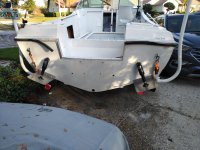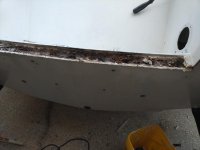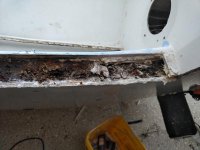jetblue319
Junior Member
well, as i was installing my Lenco trim tabs, to the transom of my 86 v20 cc, brown water came out of the drill holes. When i purchased the boat i did check for flexing on the transom, and when i removed all the hardware from the swim platform, engine mounting bolts, i didn't noticed any rot from the holes. the boat has not been in water for 6 years, it sat on a trailer or blocks, covered. Any way to verify how much damage is done? If the transom must be repaired has anyone used "coosan board blue 26" from boat outfitter instead of marine plywood.? any advice is appreciated. i did see skunkwork's you tube video.
thanks
jet
thanks
jet
Last edited:




